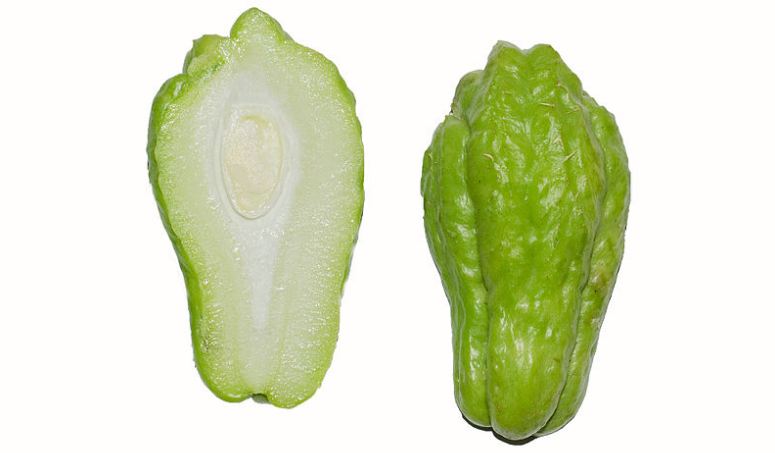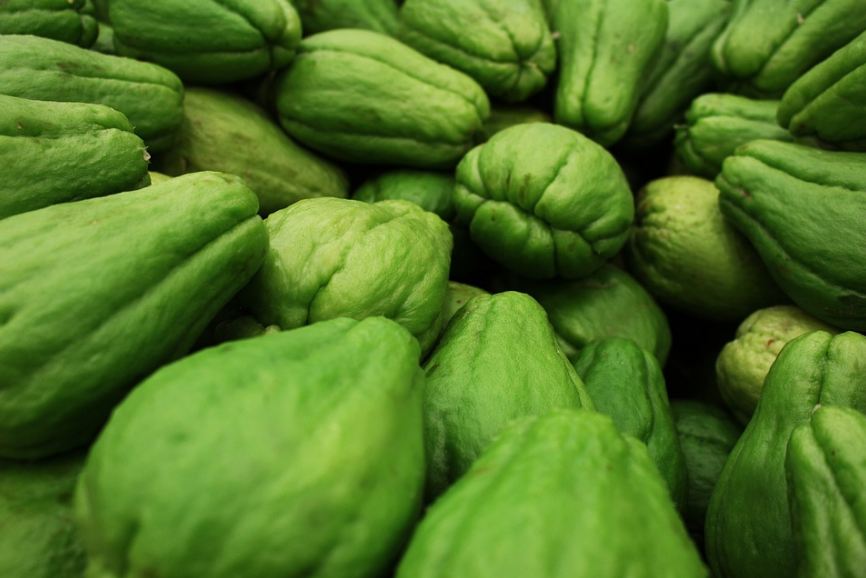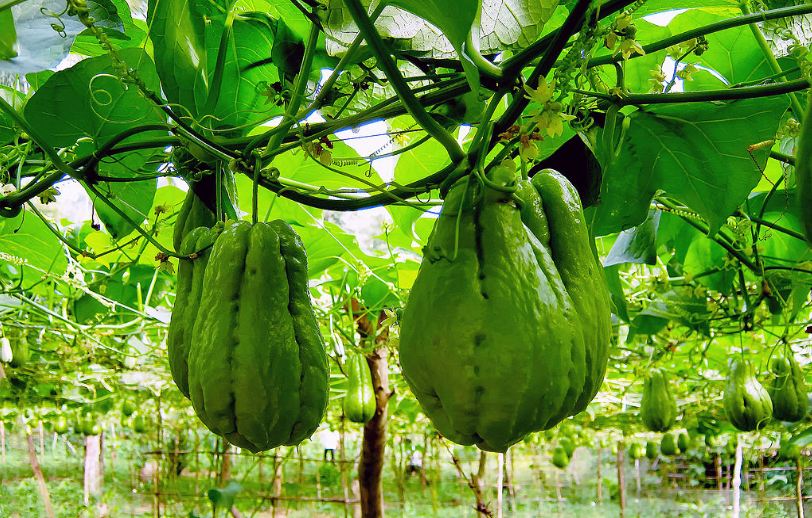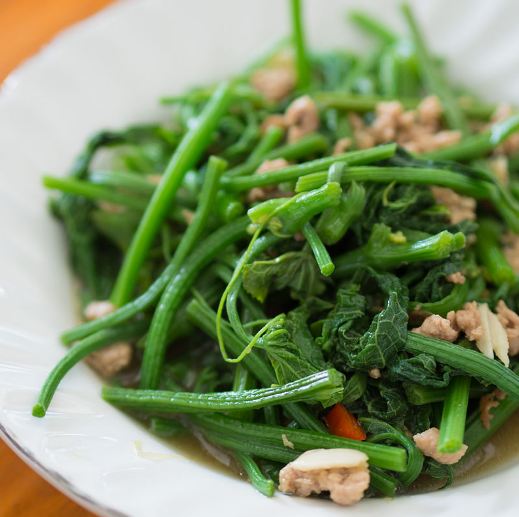Chayote, native to Mexico, is a thin-skinned squash. It is a member of the cucumber family (Cucurbitaceae). Technically, chayote is a fruit, but people consume it like a vegetable. All the parts of this bumpy green fruit are edible, including flowers, roots, skin, leaves, flesh, shoots, and seeds. You can eat it raw or stuffed, boiled, steamed, fried, baked, or marinated – your choice.
In a raw form, the pale green flesh of chayote is crisp. However, when cooked, it gets soft. The scientific name of this fruit is Sechiumedule. The pear-shaped, light green fruit is also known by several other names, including Cho-Cho, Vegetable Pear, Chaco, Chayote Squash, Custard Marrow, Cholo, Choco, and Madeira Marrow.
Some of the well-known and common varieties of chayote include Cabeza de Chango, Chayotillo, and Chayote de Caballo. Chayote is a refreshing food, admired for its cucumber-like cool, mild, and slightly sweet taste that contains a nutritional punch. The softness and neutral flavor of this fruit make it extremely good for the food industry. The prime purpose of chayote is its use for culinary.

It adds texture to your spicy dishes, desserts, and soups, and you can pair chayote with anything. To grow chayote, you need well-drained and rich soil. It cultivates best in the warm season and may contribute to better drainage and nutrient supply. The Chayote plant begins to produce flowers after 120 to 150 days of maturation.
Nutritional Value of Chayote
Apart from their great flavor, chayote is an excellent source of minerals, vitamins, and nutrients, including moderate amounts of manganese, zinc, vitamin K, copper, and B6, plus loads of folic acid and vitamin C. Moreover, it also carries small amounts of iron and calcium.
Nutrients per Serving
According to USDA, fresh medium-sized chayote (204 grams) contains the following:
- 264 grams of fat
- 16 grams carbohydrates
- 45 grams of fiber
- 0 grams of cholesterol
- 37 grams of sugar
- 6 calories
- 06 mg sodium
- 66 grams of protein
- 384 mg manganese
- 254 mg potassium
- 954 mg niacin
- 189 µgfolate
- 32 µg vitamin K
- 154 µg vitamin B6
- 6 µg vitamin C
- 5 mg zinc
- 4 mg magnesium
Health Benefits of Chayote
Chayote, without any doubt, is an excellent addition to almost all kinds of diets. Moreover, it is low in calories but offers a considerable amount of essential nutrients, antioxidants, and fiber. In short, it provides several health benefits. A single chayote squash could provide you zinc, magnesium, protein, potassium, vitamin K, C, B6, and B9. Also, it is low in fat, total carbs, calories, and sodium.
1. Contains Potent Antioxidants
Antioxidants protect the body against cellular damage, lowers stress, and reduces inflammation, and these compounds are present in a variety of foods. Chayote squash provides the antioxidants myricetin, kaempferol, quercetin, and morin. Moreover, myricetin has the highest concentration. The research proposes that it holds strong anti-inflammatory, anticancer, and anti-diabetes properties.
Chayote is a significant source of vitamin C that also acts as an antioxidant in the body.
2. Natural Antimicrobial
An antimicrobial is a state that means to stop the growth of microorganisms or kill them. Extract of chayote’s seed, stem, and leaf show antimicrobial benefits against bacteria.
A study published in Microbial Ecology in Health and Disease exhibited the splendid mechanism of antimicrobial activity of chayote extracts and its potential clinic use as the new powerful antimicrobial compound’s natural source.
3. Promotes Heart Health
Consumption of Chayote squash enhances many heart disease risk factors like poor blood flow, high cholesterol, and high blood pressure. A study indicated that chayote contains compounds that reduce blood sugar and help relax blood vessels and ultimately improve blood flow. A notable antioxidant in chayote,myricetin, helps to lower cholesterol in some animal researches.
Chayote is also a rich source of fiber, and higher consumption of fiber-rich foods reduces the risk of heart diseases.
4. Boost Digestion
Chayote encourages digestive health in several ways as it contains significant levels of digestive-boosting nutrients and fiber. It enhances the growth of healthy bacteria in the gut and helps prevent constipation. According to research, gut health plays a substantial role in mental as well as physical health.
5. Promotes Blood Sugar Control
Since the chayote is high in soluble fiber and low in total carbs, it manages blood sugar levels. Soluble fiber slows down the absorption of carbs and digestion and lowers blood sugar response after eating. By affecting insulin, this squash can also enhance sugar control.
When the cells of your body become less sensitive to insulin, a condition called insulin resistance occurs. Insulin is a hormone that manages blood sugar levels. The condition can result in diabetes due to the progressive increase in blood sugar levels.
The research proposed that chayote contains a unique plant compound that plays a part in increasing insulin sensitivity. It does so by lowering enzyme activity linked to type 2 diabetes and inadequate blood sugar regulation.
How to Prepare Chayote?
Chayote, grown in many states of the USA, is available in several grocery stores all around the southern United States. If you do not find chayote at your local store, you can purchase it online as well. When it comes to its preparation, you can prepare chayote like all the other kinds of squash.
A few of the ways to enjoy chayote are:
- Just like you eat celery or cucumber, you can consume raw chayote.
- You can add raw chayote cubes to your fruit or vegetable salads.
- Enjoy chayote like a classic squash by boiling or steaming it.
- You can also make a pleasant addition to stews and soaps by roasting, frying, or braising chayote.
- For a refreshing appetizer, sauté sliced chayote with black pepper and salt.
- You can also mix sliced chayote with diced beans, chili, and tomatoes.
Risks and Side Effects of Chayote
Like all the other fruits and vegetables, it is possible to be allergic to chayote. If you notice an allergic reaction after consuming or handling it, see your doctor and seek medical attention as soon as possible.
Uses of Chayote
Every part of chayote, including roots, leaves, stems, and seeds, are edible, and you can use them all in squash recipes. Moreover, in most cases, people slightly cook the flesh of chayote. However, you can eat it raw as well. You can use this mild flavoring fruit as unpeeled or peeled, depends upon your preference.
Furthermore, like all the other squash, you can serve chayote with the addition of olive oil or butter and pepper and salt seasoning. The shoots and leaves can make a fascinating addition to salads, stews, and stir-fries. You can use the plant’s starchy tubers in a similar way as potatoes. A few people use the leaves of chayote in the preparation of a medicinal tea.
Conclusion
Chayote is a fruit that is a full package when it comes to taste and flavor. It has several health benefits due to the presence of many essential vitamins and minerals. These benefits make chayote a must-have addition to your diet.




